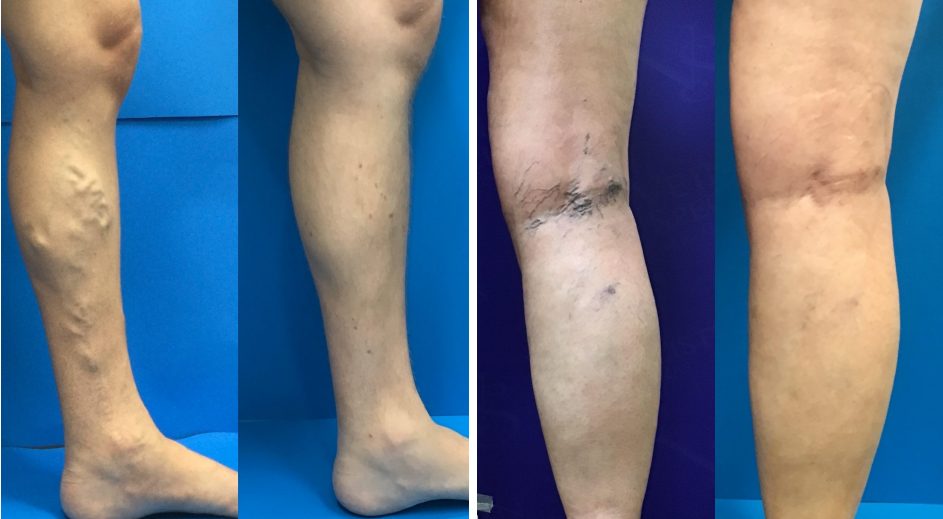Before I get to the list, let me say that sometimes vein problems are obvious because you see varicose or spider veins on your legs. However, there are lots of other reasons that are not obvious to patients, or even most doctors, that a patient’s symptoms are vein related.
Let’s go through the reasons to see a doctor for possible vein problems from the most serious to the least serious. This will also be from the least common to the most common reason.
1. Painful swelling of one leg occurs suddenly. This is a DVT, Deep Vein Thrombosis, until proven otherwise. This is a blood clot in a deep vein. This is dangerous because it can travel to the lungs and cause chest pain and shortness of breath and can be fatal. It is imperative to see a doctor as soon as possible and to have an ultrasound of the leg. All doctors know this and should send you for an ultrasound. If chest pain or shortness of breath is present, you should go directly to the ER. A Cat Scan of the chest needs to be done to look for clots in the lungs. Blood Thinners will be used for treatment.
2. Varicose veins become hard, painful, red, and hot. This is Superficial Thrombophlebitis, STP, or “Phlebitis”. This is a blood clot in a superficial vein. It is not dangerous and will not travel to the lungs. It is often confused for an infection by some doctors and antibiotics are unnecessarily prescribed. It will go away by itself. Blood Thinners are not usually needed. You should see a doctor as there may be underlying causes for this, and in some cases there may be a silent DVT. A standing leg ultrasound is needed.
3.Your lower legs become swollen and have brownish discoloration, usually worse on the inner half of the leg. You may or may not have Varicose veins. This is Chronic Venous insufficiency, CVI.
4. If a non-healing wound or sore develops. This is a Venous Leg ulcer, VLU. A standing leg ultrasound is needed
5. Your legs are heavy, achy, tired and may be swollen when you stand or sit too long and they feel better elevated or better walking. You may also have night time cramping, restlessness, itching, stinging, burning, numbness, tingling. You may or may not have varicose veins. An ultrasound performed in the standing position is needed to look for reversed venous flow called reflux.
6. You have varicose and/ or spider veins, that don’t hurt, but you just don’t like how they look.
7. You have long standing pelvic pain, not just with your menstrual cycle. There may be pain with or after intercourse, and your gynecologist, urologist, and gastroenterologist can’t find a cause. This may be pelvic congestion syndrome, PCS.This is basically varicose veins of the pelvis.
Dr. David Draughn, MD, FACS, RVT, RPVI, RPhS
Vein Specialists of the Carolinas

